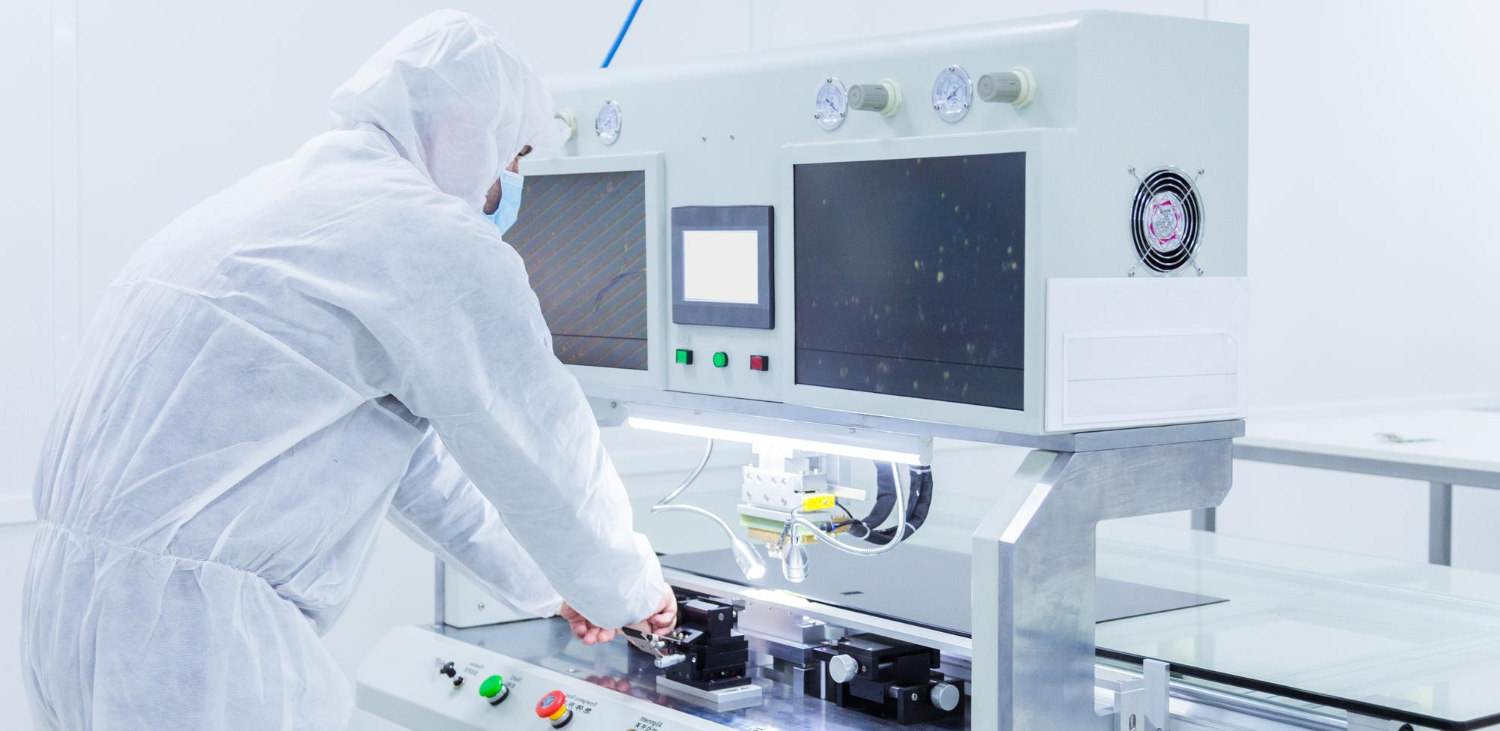
Imagine a place where air moves quietly, walls don’t collect dust, and people follow strict rules to keep everything spotless. That place is a cleanroom. Engineers and builders craft these rooms to prevent small bits of dirt, germs, and particles from causing trouble. Cleanrooms protect essential work, such as making medicine, producing tiny computer parts, and creating special tools for doctors.
Cleanrooms protect what’s inside with air filters, smooth materials, and special clothing. A cleanroom contractor helps plan, build, and inspect every part to ensure it functions correctly. Building a cleanroom requires smart choices and the right people who understand it. This blog guide will explore the purpose of cleanrooms, how they’re constructed, and why so many industries rely on them daily.
What is a Cleanroom?
A cleanroom is a special room designed to keep the air extremely clean. It prevents dust, germs, and tiny floating particles from entering. Workers use these rooms when they need their surroundings to remain exceptionally clean. Cleanrooms are essential for building safe products like medicine or computer chips.
Cleanrooms follow standards like ISO 14644-1, which specify the allowable number of particles in the air. Inside, machines circulate filtered air, ensuring no outside contaminants can enter. Cleanroom construction uses materials that do not shed crumbs or flakes.

Key Components of a Cleanroom
Air Filtration and Ventilation
The air inside a cleanroom must stay fresh and free from dust. Strong filters like HEPA and ULPA trap the tiniest particles floating around. Builders install them in the ceilings or air ducts to continuously push out clean air. The air moves in controlled patterns to prevent dust from settling on walls or tables.
Cleanrooms are also pressurised, meaning the air pressure is higher than outside. This keeps dirty air from sneaking in. The airflow acts like a gentle shield, wrapping around the cleanroom and protecting whatever is inside.
Cleanroom Materials
A clean room walls, floors, and ceilings must remain extremely smooth. Builders select materials that resist peeling, cracking, or emitting odours. These surfaces must be durable and should not generate additional dust. Materials such as vinyl flooring or polished metal walls are ideal, as they resist stains and can be wiped clean easily.
Joints are tightly sealed to prevent seams where dirt could accumulate. Lights, windows, and other fixtures are installed flush to avoid protrusions. These design choices help maintain a contamination-free and easily cleanable environment.
Lighting and Controls
Cleanrooms must stay bright so workers can see every tiny detail. Engineers install LED lights that don’t generate heat and use less energy. These lights sit behind smooth covers to prevent particles from falling from above. Sensors on the walls continuously monitor the room’s temperature, air pressure, and humidity.
If anything changes, the system immediately displays alerts. These tools help workers fix problems quickly so the cleanroom continues operating as intended. Good lighting and smart controls ensure a clean, safe work environment.
Read More: Why PVC Wall Panels Are the Best Choice for Cleanrooms
Industries That Use Cleanrooms
Cleanrooms protect many different types of work. Here are five big industries that use them every day:
- Pharmaceuticals: People who make medicine use cleanrooms to keep their work safe and free from contamination. If dust or germs get into the medicine, it may become ineffective or make people sick. So, these workers use cleanrooms to protect every step of the process. They follow strict protocols to keep the air and surfaces free of contaminants, which helps them make strong, safe products.
- Biotechnology: In biotechnology, scientists work with cells, DNA, and chemicals. Even a speck can contaminate their work. That’s why they do everything in cleanrooms. These rooms help protect their experiments and discoveries. Cleanrooms also help them create new treatments and safe food products. These spaces help ensure the results are accurate.
- Microelectronics: Tiny parts like chips and circuits can malfunction if dust lands on them. That’s why microelectronics factories rely on cleanrooms. Cleanrooms provide these workers a controlled environment to build small, powerful components. Engineers follow cleanroom rules to make sure every little part works correctly.
- Aerospace: Cleanrooms help people build tools that go into space. These parts must function in harsh conditions without room for error. If dust gets on a satellite or space camera, it may malfunction. So, workers build and check these parts in a cleanroom to keep them safe and working.
- Medical Devices: Doctors need trusted tools. Cleanrooms help ensure these tools stay clean and ready to use. Inside cleanrooms, people build heart monitors, surgical tools, and testing kits. They keep the parts sterile to ensure patient safety during medical procedures.

The Role of a Cleanroom Contractor
Planning and Guiding
A cleanroom contractor helps turn ideas into real, working cleanrooms. They study each business’s needs and design a cleanroom that fits. The contractor asks the right questions, draws smart plans, and picks the best path to the goal.
Start Designing
Every cleanroom has special jobs to do. A cleanroom architecture creates a design that matches the space, the job, and the rules. They plan where each part goes walls, doors, filters, and machines so the whole room works together. Their smart designs keep air flowing and protect the room from problems.
Building with Purpose
Once the design is ready, the cleanroom contractor brings it to life. They choose the right materials, tools, and steps. They make sure every panel fits tightly and is clean. These builders take care to leave no cracks or weak spots. They use their skills to build rooms that don’t let dirt in.
Testing for Safety
When the cleanroom is built, the contractor checks every piece. They test the air, the pressure, and the filters. They make sure everything meets the rules. Only when everything works perfectly does the contractor hand over the room for work.
Full Support
Many cleanroom contractors offer start-to-finish help. They handle each part, from drawings to inspections. This way, you don’t need to find lots of helpers. One contractor guides the whole job, saving time and keeping things on track.
Read Also: Types of Cleanroom Panels in Malaysia
Cleanroom Construction: What to Consider
Cleanroom construction requires care, planning, and wise choices. Before building, one must consider what kind of work will occur inside. This helps determine the cleanroom class, air filters, and materials to use. The contractor also evaluates airflow patterns and personnel pathways.
Picking the right materials matters. Smooth walls and strong floors make cleaning easier and keep the room safe. The contractor also adds machines to control heat and moisture. If the cleanroom might grow later, they plan for that, too. Working with a good cleanroom contractor keeps everything clear and helps the project stay on track from start to finish.
Cleanroom vs Clean Room: Is There a Difference?
Cleanroom:
- Used in technical, scientific, and industrial settings
- Preferred by engineers and cleanroom contractors
- Common in cleanroom construction documents
Clean room:
- A clean room is used in casual or general writing
- Less formal, but it means the same
Cleanroom Maintenance and Monitoring
Keeping a cleanroom in top shape requires regular inspections. Workers clean every surface with special supplies that don’t leave dirt behind. They also inspect filters, check sensors, and monitor air pressure and temperature.
Machines inside the cleanroom display alerts when something changes, helping the team fix problems immediately. These checks prevent dust and dirt from building up and ensure the room functions as it should. With regular maintenance, the cleanroom stays ready to protect people, tools, and products daily.
Conclusion
Cleanrooms help protect some of the most essential work for any industry. Whether scientists are developing new medicines or engineers are crafting tiny computer chips, cleanrooms provide a safe environment for their work. A cleanroom contractor helps design and build these specialised rooms correctly. Every component must be incorporated, from choosing the best equipment to fitting air filtration systems. Building and maintaining a cleanroom involves an in-depth knowledge of all regulations and careful attention to detail.
Related Blog:
